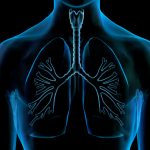
There are many similarities between emphysema and chronic bronchitis, but they also have very notable differences that distinguish them from one another.
Emphysema results from a gradual destruction of the air sacs in the lungs, which hinders breathing. These sacs, known as alveoli, are responsible for providing oxygen to the bloodstream. With the destruction of alveoli elasticity, the pulmonary airways become reduced, leading to shortness of breath and difficulty breathing.
Chronic bronchitis is considered the opposite of emphysema because instead of destruction it causes inflammation. Bronchitis affects the windpipe and passageways of the lungs, which become irritated and cause infection. Bronchitis can be temporary or it can be chronic. In chronic bronchitis, the body attempts to rid itself of the infection, which leads to severe coughing.
Difference in chronic bronchitis and emphysema symptoms

Pink puffer, on the other hand, describes emphysema because there is more oxygen available but the person has difficulty breathing. Prolonged exhalation causes too many red blood cells to be in the lungs, causing a pinkish red color.
Although there are differences in each condition, both can exist together, which leads to further complications.
Causes and symptoms of emphysema
The primary causes of emphysema result from prolonged exposure to airborne irritants, such as tobacco smoke, air pollution and manufacturing fumes. Although rare, emphysema can also be caused by an inherited deficiency of a protein called alpha-1-antitrypsin.
A person can have emphysema for years without being aware of it because no symptoms are present. The main symptom of emphysema is shortness of breath. This symptom can be overlooked at times because there are many activities we perform that can lead to shortness of breath. Additionally, you may believe that shortness of breath is associated with aging. Until the shortness of breath begins to interfere with daily tasks, you may not even consider it a serious problem.
Prevention and treatment of emphysema
The best way to prevent emphysema is to not smoke, avoid being around smoke, minimize your intake of air pollution and always wear a mask when near fumes or chemicals.
- Regular exercise
- Not smoking
- Avoiding respiratory irritants, such as pollen, dust, mold, pollution and chemicals
- Protecting yourself from cold air – wear a scarf to cover your mouth and neck
- Taking precautions to prevent respiratory infections, i.e. getting vaccinated for pneumonia
Related Reading:
Asthma, COPD, and bronchitis: Key differences in common respiratory diseases
Common respiratory diseases like asthma, bronchitis and COPD can seriously impact a person’s quality of life, but proper diagnosis and treatment can help those who suffer live more comfortably. Understanding the differences between asthma, COPD and bronchitis can help lead to appropriate care. Continue reading…
Yoga found effective for patients with COPD
Researchers at the Department of Pulmonary Medicine and Sleep Disorders and All India Institute of Medical Sciences found yoga exercises were just as effective as traditional pulmonary rehabilitation at improving pulmonary function, exercise capacity and systemic inflammation in COPD patients. Continue reading…
Sources:
http://copd.about.com/od/faq/f/copddifferences
https://lunginstitute.com/blog/difference-between-emphysema-and-chronic-bronchitis
http://www.healthhype.com/chronic-bronchitis-vs-emphysema-and-difference-in-symptoms
http://www.mayoclinic.org/diseases-conditions/emphysema/basics/causes
http://www.mayoclinic.org/diseases-conditions/emphysema/basics/symptoms
http://www.mayoclinic.org/diseases-conditions/emphysema/basics/prevention
http://www.mayoclinic.org/diseases-conditions/emphysema/basics/lifestyle-home-remedies
http://www.healthline.com/health/copd/emphysema-treatment-options